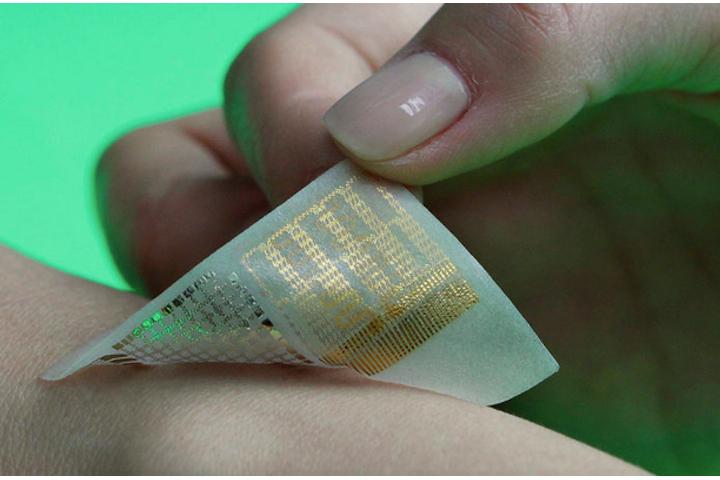
Outside of smartwatches, wristbands, and smart eyewear, wearable technology is making waves in the medical community. For example, we’ve already heard about health-monitoring “tattoos,” which can tell doctors about how your heart, muscles, or brain are functioning. The next evolutionary step could be similar smart patches, developed using nano technology, which not only deliver drugs into your system, but know when you’ve had enough or need a higher dose.
A study, carried out in South Korea and published by Nature Technology, outlines the development of “wearable bio-integrated systems,” as an alternative to wearing bulkier hardware. These skin patches are not only less intrusive, but are also capable of delivering medicine to the wearer, and smart enough to know how much is needed.
The stretchable, rectangular patches measure around 2-inches in size, and have a nano-particle coating which monitors muscle activity. They’re heat activated, and when the wearer’s body temperature rises, so the drug delivery is increased. By using a system like this, patients would no longer need to wear potentially uncomfortable, or highly noticeable health monitoring devices, but more importantly there’s no possibility of forgetting, or being unable, to take pills at the right time.
An example given in the paper is for sufferers of Parkinson’s disease. Muscle tremors would be picked up by the patch, and thanks to an integrated memory system, it would know if a higher dose of corrective treatment was required. In the cases where body temperature doesn’t change, but medicine is still needed, a built-in heater is activated to start the flow.
Speaking to The Verge, one of the engineers working on the project said that in the future, wireless components could be added to the patch. This would allow doctors to remotely diagnose patients based on telemetry gathered by the patch, then tell it to either increase or decrease drug dosage. All without a visit to the hospital or doctor’s office. It’s very exciting, but the technology is still in the early stages, and we shouldn’t expect to see this type of wearable medical patch for at least another five years.
Editors' Recommendations
- How fast is 5G? What you need to know about 5G speeds
- Is it time to shut your mouth? This smart wearable will let you know
- Android 11: Everything you need to know
- Huawei’s Android-alternative operating system: Everything you need to know




